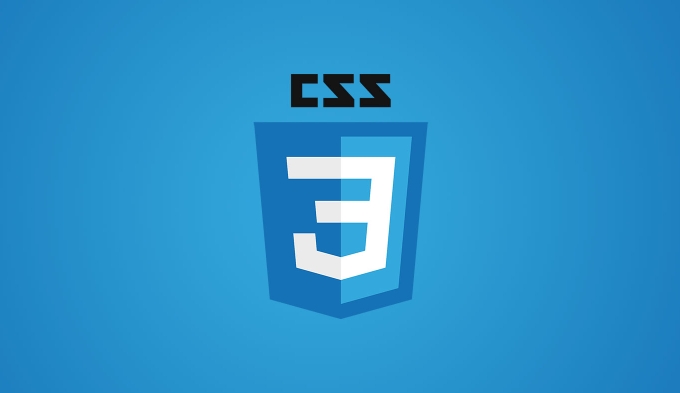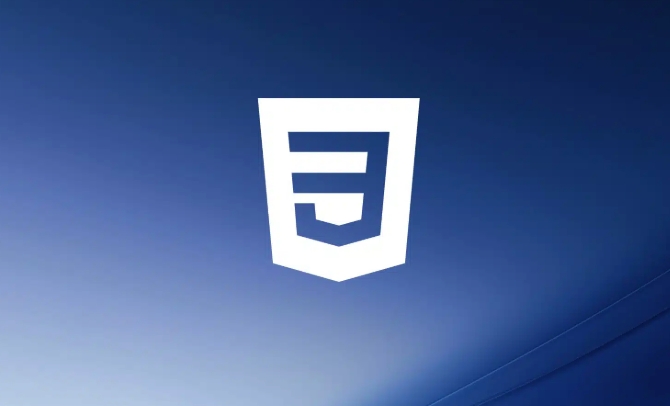What are the basics of a CSS tutorial for absolute beginners?
Jun 30, 2025 am 01:08 AMBeginners of CSS should first understand how they collaborate with HTML, master the CSS rules and structure, learn text and color styles, and understand the basics of layout. The article points out that HTML builds a web structure, and CSS is responsible for visual styles, connecting CSS and HTML through link tags; CSS rules are composed of selectors and declaration blocks; common attributes include color, font, alignment, etc.; each element consists of content, inner margins, borders, and outer margins to form a box model, and the display type can be controlled through block, inline, and inline-block. It is recommended to gradually explore the Flexbox or Grid layout starting from simple margin adjustment.

If you're completely new to CSS, the basics might seem a bit overwhelming at first, but they're actually quite straightforward once you understand how it fits into the bigger picture of web development. CSS (Cascading Style Sheets) is what gives your HTML content its visual style — things like colors, fonts, spacing, and layout. The key is to start small, learn how to connect CSS to HTML, and understand the basic structure of CSS rules.

Understanding How HTML and CSS Work Together
Before diving into styling, it's important to know that HTML provides the structure of a webpage, while CSS controls how that structure looks. Think of HTML as the skeleton and CSS as the skin and clothes.

To use CSS with HTML, you typically link a .css file to your HTML document using the <link> tag inside the section. For example:
<link rel="stylesheet" href="styles.css">
This tells the browser where to find the styling instructions. Alternatively, you can also write CSS directly in your HTML file using the <style> tag or even apply styles inline with the style attribute — but those are less common for larger projects because they make maintenance harder.

Learning the Structure of a CSS Rule
At the heart of CSS is the rule — the basic unit that tells the browser how to style something. A CSS rule consists of a selector and a declaration block , which contains one or more declarations .
Here's a simple example:
p {
color: blue;
font-size: 16px;
}-
pis the selector — it targets all paragraph elements. - The part between
{}is the declaration block. - Each line inside the block is a declaration —
colorandfont-sizeare properties, andblueand16pxare their values.
Getting comfortable reading and writing this syntax is cruel because almost everything else in CSS builds on it.
Style Text and Colors
One of the most common tasks in CSS is changing the appearance of text. You'll often work with properties like:
-
color– sets the text color -
font-family– changes the typeface -
font-size– adjusts how big the text appears -
text-align– controls alignment (left, right, center)
For example:
h1 {
color: #333;
font-family: Arial, sans-serif;
font-size: 24px;
text-align: center;
} Colors can be written in different formats — named colors like red , hex codes like #ff0000 , RGB values ??like rgb(255, 0, 0) , or even HSL. Hex codes are popular because they're compact and precision.
It's also good to remember that not every font you like will be available on every device. That's why it's common to list a few options in font-family , ending with a generic family like sans-serif or serif .
Getting Started with Layout Basics
Once you're comfortable with styling text, the next step is learning how to position elements on the page. Two fundamental concepts here are the box model and display types .
Every element in CSS is essentially a box made up of content, padding, border, and margin. You can adjust these parts individually using properties like padding , border , and margin .
Also, elements behave differently depending on their display value:
-
blockelements (like<div> ) take up the full width and stack vertically.<li> <code>inlineelements (like<span></span>) sit within lines of text and only take up as much space as needed. -
inline-blocklets you control spacing while keeping the inline behavior.
A beginner-friendly way to start laying out content is by using simple margins and padding to space things out, and then later exploring tools like Flexbox or Grid for more advanced layouts.
That's basically all you need to get started with CSS. It's not overly complicated, but there are plenty of small details that make a big difference in how your site looks and behaves. Keep practicing by building small examples, and soon enough, styling web pages will feel second nature.
The above is the detailed content of What are the basics of a CSS tutorial for absolute beginners?. For more information, please follow other related articles on the PHP Chinese website!

Hot AI Tools

Undress AI Tool
Undress images for free

Undresser.AI Undress
AI-powered app for creating realistic nude photos

AI Clothes Remover
Online AI tool for removing clothes from photos.

Clothoff.io
AI clothes remover

Video Face Swap
Swap faces in any video effortlessly with our completely free AI face swap tool!

Hot Article

Hot Tools

Notepad++7.3.1
Easy-to-use and free code editor

SublimeText3 Chinese version
Chinese version, very easy to use

Zend Studio 13.0.1
Powerful PHP integrated development environment

Dreamweaver CS6
Visual web development tools

SublimeText3 Mac version
God-level code editing software (SublimeText3)
 How to change text color in CSS?
Jul 27, 2025 am 04:25 AM
How to change text color in CSS?
Jul 27, 2025 am 04:25 AM
To change the text color in CSS, you need to use the color attribute; 1. Use the color attribute to set the text foreground color, supporting color names (such as red), hexadecimal codes (such as #ff0000), RGB values (such as rgb(255,0,0)), HSL values (such as hsl(0,100%,50%)), and RGBA or HSLA with transparency (such as rgba(255,0,0,0.5)); 2. You can apply colors to any element containing text, such as h1 to h6 titles, paragraph p, link a (note the color settings of different states of a:link, a:visited, a:hover, a:active), buttons, div, span, etc.; 3. Most
 What is a stacking context?
Jul 27, 2025 am 03:55 AM
What is a stacking context?
Jul 27, 2025 am 03:55 AM
Astackingcontextisaself-containedlayerinCSSthatcontrolsthez-orderofoverlappingelements,wherenestedcontextsrestrictz-indexinteractions;itiscreatedbypropertieslikez-indexonpositionedelements,opacity
 Describe different CSS units and when to use them
Jul 27, 2025 am 04:24 AM
Describe different CSS units and when to use them
Jul 27, 2025 am 04:24 AM
In web development, the choice of CSS units depends on design requirements and responsive performance. 1. Pixels (px) are used to fix sizes such as borders and icons, but are not conducive to responsive design; 2. Percentage (%) is adjusted according to the parent container, suitable for streaming layout but attention to context dependence; 3.em is based on the current font size, rem is based on the root element font, suitable for elastic fonts and unified theme control; 4. Viewport units (vw/vh/vmin/vmax) are adjusted according to the screen size, suitable for full-screen elements and dynamic UI; 5. Auto, inherit, initial and other values are used to automatically calculate, inherit or reset styles, which helps to flexibly layout and style management. The rational use of these units can improve page flexibility and responsiveness.
 How to use the CSS backdrop-filter property?
Aug 02, 2025 pm 12:11 PM
How to use the CSS backdrop-filter property?
Aug 02, 2025 pm 12:11 PM
Backdrop-filter is used to apply visual effects to the content behind the elements. 1. Use backdrop-filter:blur(10px) and other syntax to achieve the frosted glass effect; 2. Supports multiple filter functions such as blur, brightness, contrast, etc. and can be superimposed; 3. It is often used in glass card design, and it is necessary to ensure that the elements overlap with the background; 4. Modern browsers have good support, and @supports can be used to provide downgrade solutions; 5. Avoid excessive blur values and frequent redrawing to optimize performance. This attribute only takes effect when there is content behind the elements.
 How to style links in CSS?
Jul 29, 2025 am 04:25 AM
How to style links in CSS?
Jul 29, 2025 am 04:25 AM
The style of the link should distinguish different states through pseudo-classes. 1. Use a:link to set the unreached link style, 2. a:visited to set the accessed link, 3. a:hover to set the hover effect, 4. a:active to set the click-time style, 5. a:focus ensures keyboard accessibility, always follow the LVHA order to avoid style conflicts. You can improve usability and accessibility by adding padding, cursor:pointer and retaining or customizing focus outlines. You can also use border-bottom or animation underscore to ensure that the link has a good user experience and accessibility in all states.
 How to center text in CSS?
Jul 27, 2025 am 03:16 AM
How to center text in CSS?
Jul 27, 2025 am 03:16 AM
Use text-align:center to achieve horizontal centering of text; 2. Use Flexbox's align-items:center and justify-content:center to achieve vertical and horizontal centering; 3. Single-line text can be vertically centered by setting line-height equal to the container height; 4. Absolute positioning elements can be combined with top: 50%, left: 50% and transform:translate (-50%, -50%) to achieve centering; 5. CSSGrid's place-items:center can also achieve dual-axis centering at the same time. It is recommended to use Flexbox or Grid first in modern layouts.
 What are user agent stylesheets?
Jul 31, 2025 am 10:35 AM
What are user agent stylesheets?
Jul 31, 2025 am 10:35 AM
User agent stylesheets are the default CSS styles that browsers automatically apply to ensure that HTML elements that have not added custom styles are still basic readable. They affect the initial appearance of the page, but there are differences between browsers, which may lead to inconsistent display. Developers often solve this problem by resetting or standardizing styles. Use the Developer Tools' Compute or Style panel to view the default styles. Common coverage operations include clearing inner and outer margins, modifying link underscores, adjusting title sizes and unifying button styles. Understanding user agent styles can help improve cross-browser consistency and enable precise layout control.
 How to create a dashed line with CSS?
Jul 28, 2025 am 03:34 AM
How to create a dashed line with CSS?
Jul 28, 2025 am 03:34 AM
Use the border attribute to set the dashed style to quickly create dotted lines, such as border-top:2pxdashed#000; 2. You can customize the appearance of the dotted line by adjusting the border width, color and style; 3. When applying the dotted line to dividers or inline elements, it is recommended to set height:0 or reset the default style of hr; 4. If you need to accurately control the length and spacing of the dotted line, you should use background-image and linear-gradient to cooperate with linear-gradient, for example, background:linear-gradient(toright, black33%, transparent33%) repe






